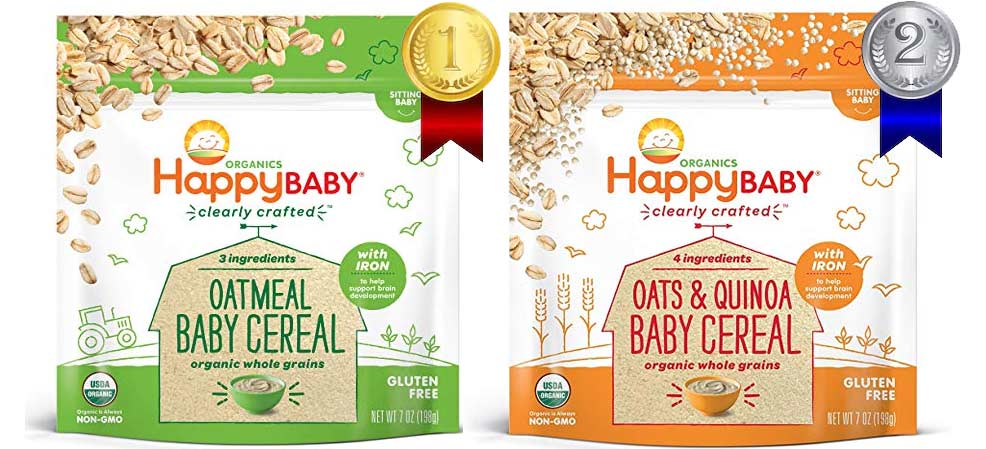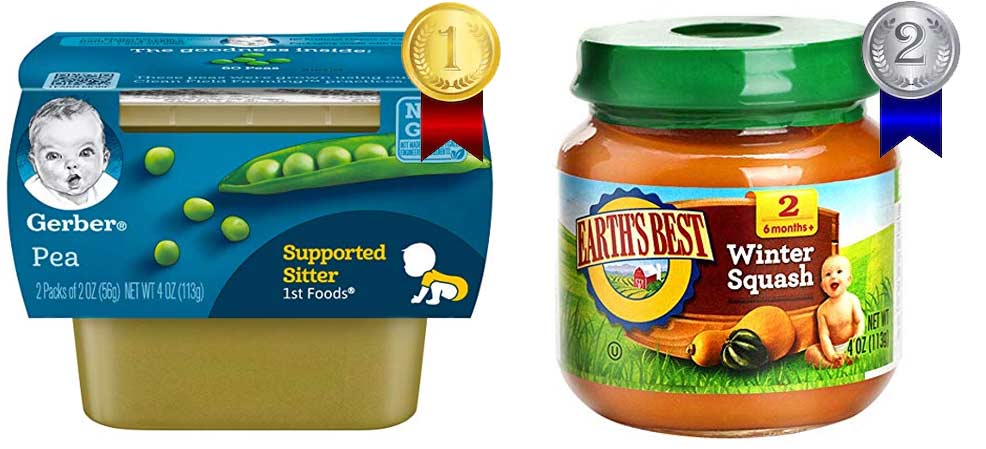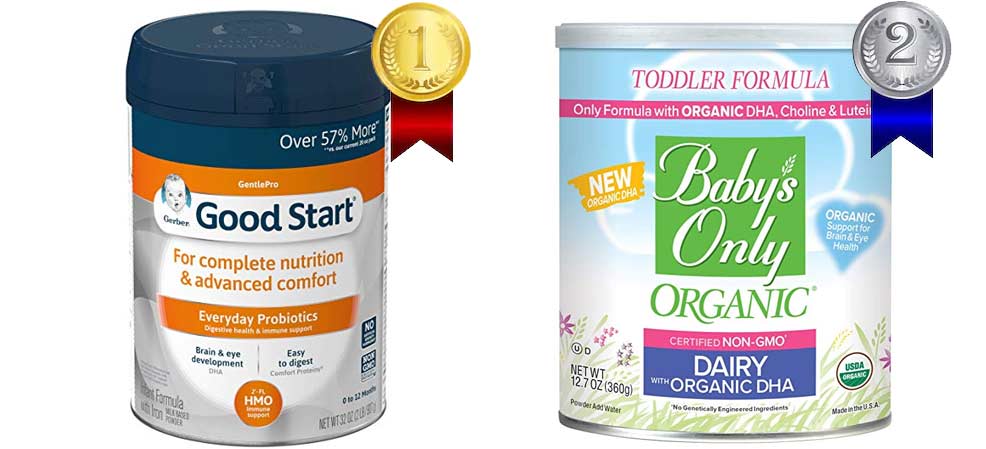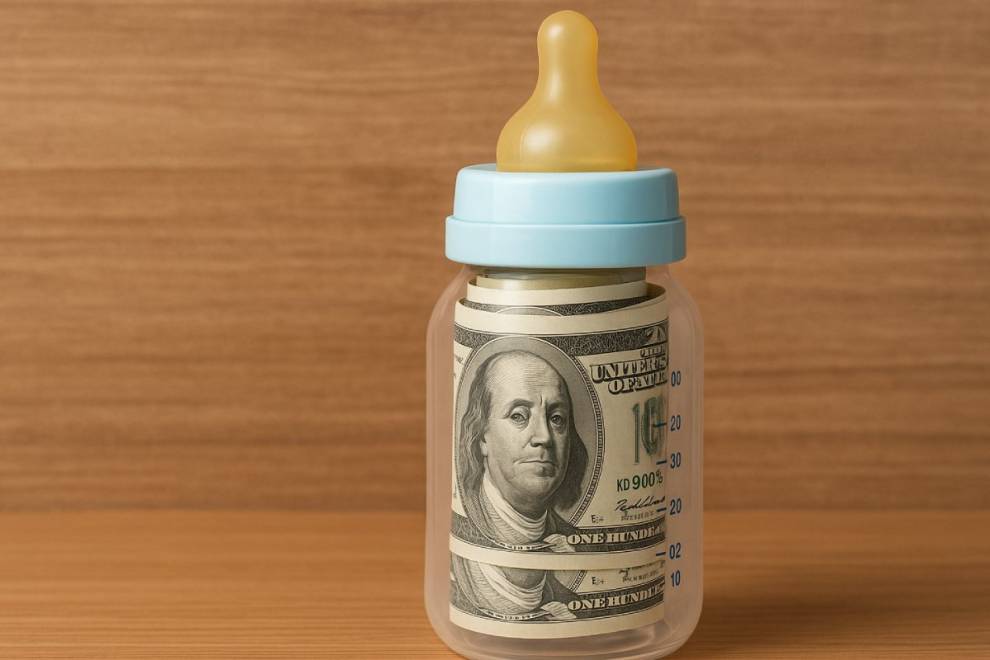A scary thing to find in baby food or formula, heavy metals are invisible but dangerous.

Mommyhood101 independently tests and curates baby gear to help you make informed decisions. If you buy products through links on our site, we may earn a commission.
The HBBF conducted a study to test for 4 different toxic heavy metals in 61 baby food brands and 168 different food and formula products.
The group tested for lead, mercury, arsenic, cadmium and an additional neurotoxin called perchlorate.
Note that this article was updated in response to the Staff Reports from the U.S. House of Representatives, specifically the Subcommittee on Economic and Consumer Policy, Committee on Oversight and Reform.
If you're finding it difficult to find the baby food staff reports, we have hosted them here:
Download: ECP Baby Food Staff Report 02-04-2021 (pdf file)
Download: ECP Second Baby Food Staff Report 09-29-2021 (pdf file)
This new report considered products from the following manufacturers: Nurture, Inc (Happy Family Organics, and HappyBaby), Beech-Nut Nutrition Company, Hain Celestial Group, Inc (Earth's Best Organic), Gerber, Campbell Soup Company (Plum Organics), Walmart (Parent's Choice), and Sprout Foods, Inc.
Results of this new report demonstrate the following primary points:
1. All tested baby foods contained heavy metals, including arsenic, lead, cadmium, and mercury.
2. While most companies perform internal testing for heavy metals, they still allow dangerously high levels of heavy metals to occur in ingredients and final products.
3. Specifically big offenders, according to the report, were Walmart (Parent's Choice), Sprout Organic, and Plum Organics.
Heavy Metals in Baby Foods
The recent Congressional report was motivated by a study released by the non-profit Healthy Babies Bright Future (HBBF) organization. That study, released in October 2019, caused widespread concern among parents about the safety of traditional and organic baby foods and formulas.
In their study, the HBBF tested for 4 different toxic heavy metals in 61 baby food brands and 168 different food and formula products: lead, mercury, arsenic, cadmium and an additional neurotoxin called perchlorate.
They found concerning results for even the best organic baby cereals, the best baby food purees, and best organic baby formulas.
All four of the heavy metals they tested for are considered neurotoxic. Arsenic, lead and mercury have all been shown to interfere with brain development and cause permanent IQ reductions in children. Additionally, arsenic, cadmium and lead are all carcinogens in humans, meaning that they can cause or increase the risk of cancer.
The results of the study were alarming, and we review them below.
Note that even in the trace amounts found in food, these contaminants can alter the developing brain and erode a child's IQ. The impacts add up with each meal or snack a baby eats.
Baby Cereals with Arsenic, Lead, and Cadmium
Let's start with baby cereals: rice based.
All 7 of the tested rice cereals contained high Arsenic levels exceeding the HBBF limit of 25ppb (parts per billion).
All 7 of the tested rice cereals contained high Lead levels exceeding the AAP and EDF limits of 1ppb.
All 7 of the tested rice cereals contained high Cadmium levels exceeding the CR limit of 1ppb.
There are no guidelines for Mercury contents, but the good news is that they were all much lower than what is typically found in a can of tuna fish (about 50-300ppb).
Now let's consider baby cereals: non-rice based.
Five of the 11 tested non-rice (oatmeal or multi-grain) baby cereals contained high Arsenic levels exceeding the HBBF limit of 25ppb.
Nine of the 11 tested non-rice (oatmeal or multi-grain) baby cereals contained high Lead levels exceeding the AAP and EDF limit of 1ppb.
All 11 of the tested non-rice (oatmeal or multi-grain) baby cereals contained high Cadmium levels exceeding the CR limit of 1ppb.
There are no guidelines for Mercury contents, but the good news is that they were all much lower than what is typically found in a can of tuna fish (about 50-300ppb).
Which Baby Cereals have the Lowest Levels?
We do not recommend feeding your baby rice baby cereals, given the alarmingly high Arsenic levels found in all tested products. Great alternatives are oats, barley, and other mixed whole grains.
The baby cereal winner with the lowest overall Arsenic, Lead and Cadmium levels is the HappyBABY Oatmeal Baby Cereal, Organic Whole Grains.
The runner-up with the second-lowest overall levels of these heavy metals is the HappyBABY Oats & Quinoa Baby Cereal, Organic Whole Grains with Iron.
Heavy Metals in Baby Foods - Vegetable Purees
Of the 38 tested vegetable (single and multiple) purees, only 1 contained excessive Arsenic levels (HappyBABY Sweet Potatoes Stage 1).
33 of the 38 tested vegetable purees contained excessive levels of Lead, especially the Sweet Potato purees. Lowest levels were generally string bean, pea, and squash purees.
29 of the 38 tested vegetable purees contained excessive levels of Cadmium, especially Gerber products containing carrots.
All tested products had very low Mercury levels.
Which Baby Vegetable Purees have the Lowest Levels?
In general, avoid sweet potato purees and Gerber products containing carrots.
The vegetable puree winner with the lowest overall Arsenic, Lead and Cadmium levels is Gerber Pea Sitter (Stage 2).
The runner-up vegetable puree winner is the Earth's Best Winter Squash Organic (Stage 2).
Heavy Metals in Baby Foods - Fruit Purees & Fruit Veggie Blends
Of the 30 tested fruit purees and fruit and vegetable blends, all of them contained acceptable Arsenic levels.
20 of the 30 tested fruit and fruit-vegetable purees contained excessive levels of Lead, especially the Beech-Nut Mixed Vegetables.
14 of the 30 tested fruit and fruit-vegetable purees contained excessive levels of Cadmium, especially when Carrots were added.
All tested products had very low Mercury levels.
Which Baby Vegetable Purees have the Lowest Levels?
In general, avoid the Sprout prunes organic baby food (high Lead), and Beech-Nut Classics Mixed Vegetables (high Lead).
The fruit puree winners with the lowest overall Arsenic, Lead and Cadmium levels were the Beech-Nut and Gerber Banana purees (Stage 2).
Heavy Metals in Baby Formulas
Thirteen different baby formulas were tested, including organic and conventional baby formula types.
ALL tested baby formulas contained detectable levels of arsenic, cadmium, lead and/or mercury!
12 of the 13 formulas exceeded the AAP and EDF limit of 1 ppb (parts per billion) of Lead.
6 of the 13 formulas exceeded the CR limit of 1ppb of Cadmium.
None of the formulas exceeded the HBBF limit of 25ppb of Arsenic.
There are no guidelines for Mercury contents, but the good news is that they were all much lower than what is typically found in a can of tuna fish (about 50-300ppb).
Which Baby Formulas have Lowest Levels?
Given the above results, let's focus on Lead and Cadmium.
The baby formula winner with the lowest overall Lead and Cadmium levels is the Gerber Good Start Gentle HM-O and Probiotics Infant Formula with Iron (Stage 1).
The runner-up with the second-lowest overall Lead and Cadmium levels is the Baby's Only Organic Non-GMO Dairy Toddler Formula.
Overall, the best organic baby formulas tend to show lower levels of heavy metals. We suggest reading our HiPP Combiotic, Loulouka, Holle, and Kendamil organic formula reviews.
Heavy Metals in Teething Snacks
Given how much Arsenic was found in the baby cereals containing rice, it shouldn't be surprising that teething snacks (like baby Mum-Mums and HappyBABY Rice Cakes) would also contain very high levels of Arsenic.
And that's exactly what they found.
Of the 12 teething biscuits and rice cakes, all but one (the Cuetara Animal Crackers) showed unacceptably high levels of Arsenic. Surprise, the animal crackers didn't contain rice!
All 12 showed unacceptably high levels of Lead, and 11 showed excessively high levels of Cadmium.
And all 12 showed generally low Mercury levels.
Which Teething Snacks have the Lowest Levels?
We do not recommend any of the teething snacks, given generally high heavy metals content. The tested Animal Crackers are very difficult to find.
Conclusions
This is getting a little scary!
When combined with the recent reports of high levels of Glyphosates found in oatmeal-based baby foods, options are slowly narrowing.
Waste water runoff in agricultural fields, streams, and rivers contributes to soils with heavy metal content that shows up in rice and several vegetables, particularly root vegetables.
Pesticide and herbicide sprays compound the issue by spraying fruits and vegetables with toxins that contaminate the foods.
The worst part is that heavy metals are consistently linked to adverse health outcomes for children. While a few exposures might not cause problems, repeated low-level exposure has been shown to be a potent neurotoxin in humans, leading to cognitive, physical, social-emotional, and health issues early on and later in life.
We encourage you to read the full report by HBBF, which also reviews the heavy metals and neurotoxins found in kids' juices, snacks (like teething biscuits and rice rusks/cakes), and prepared meals.
References
Gardener, H., Bowen, J., & Callan, S. P. (2019). Lead and cadmium contamination in a large sample of United States infant formulas and baby foods. Science of the Total Environment, 651, 822-827. See the article at Science of the Total Environment.
Beal, J. A. (2020). Heavy Metals in Baby Food: What Providers and Parents Need to Know. MCN: The American Journal of Maternal/Child Nursing, 45(2), 125. See the article at AJMCN.
Radwan, C. M. (2019). Toxic metals detected in nearly all baby foods. Contemporary Pediatrics, 36(12), 14-14. See the article at Contemporary Pediatrics
de Paiva, E. L., Morgano, M. A., & Arisseto-Bragotto, A. P. (2019). Occurrence and determination of inorganic contaminants in baby food and infant formula. Current Opinion in Food Science, 30, 60-66. See the article at Current Opinion in Food Science














